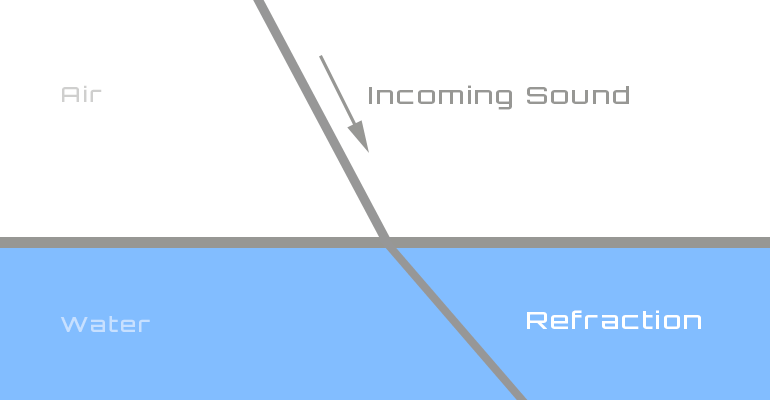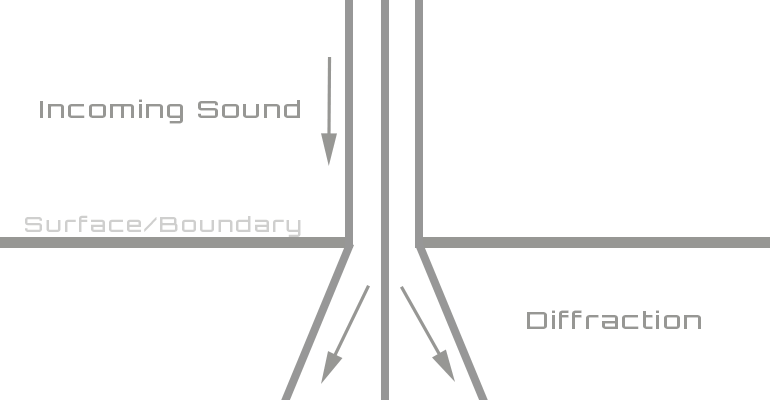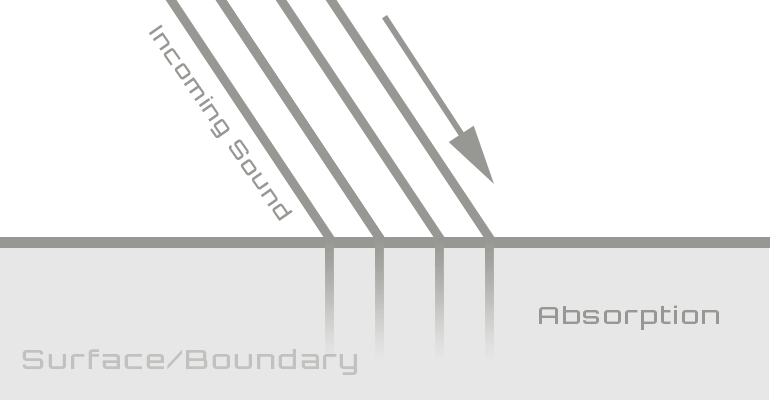Wave Behaviour
Sound waves react in different ways when they interact with an obstacle; reflection, refraction, absorption, and diffusion.
Reflection
Reflection is the process whereby part or the entire wave is returned when it encounters a boundary. For sound to be reflected, the object must be physically as large, or larger than the wave.
Low-frequency sound has a long wavelength and so can only be reflected by large objects. Higher frequency sound can be reflected by both small and large objects.
The reflected sound will have a different frequency characteristic than the direct sound if all frequencies are not reflected equally. Reflection is responsible for producing echo, reverb, and standing waves.

Refraction
Refraction is the process where a waveform changes direction as it passes from one medium to another - the speed of the wave changes as this happens.
With sound waves, it is more common for the sound to refract when it encounters a change in air temperature. Since temperature decreases with height, the speed of sound also decreases with height.

Diffraction
Diffraction is the bending of waves around small objects and the spreading out of a wave through small openings.
All waves tend to spread out at the edge when they pass through a gap or past an object. For spreading to happen, the wave must be larger than the object.
High-frequency waves have high directivity and can easily be blocked, whereas low frequencies have low directivity and spread far and wide.

Absorption
Absorption is the loss of sound through an absorbent material. Reverb and standing waves can be controlled by adding absorption materials to a room.

 Teach Me Audio
Teach Me Audio